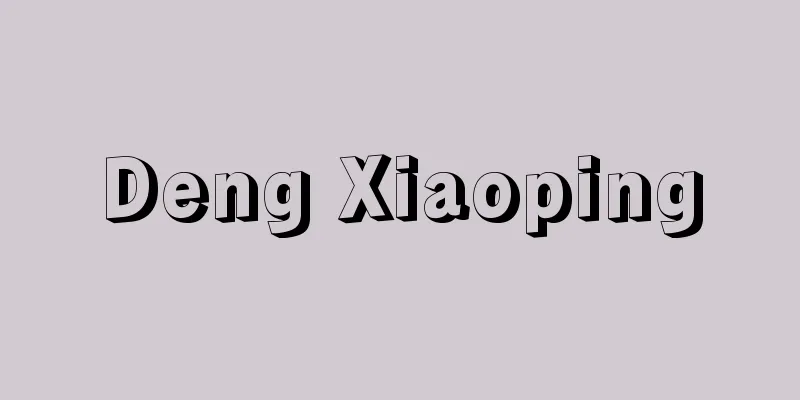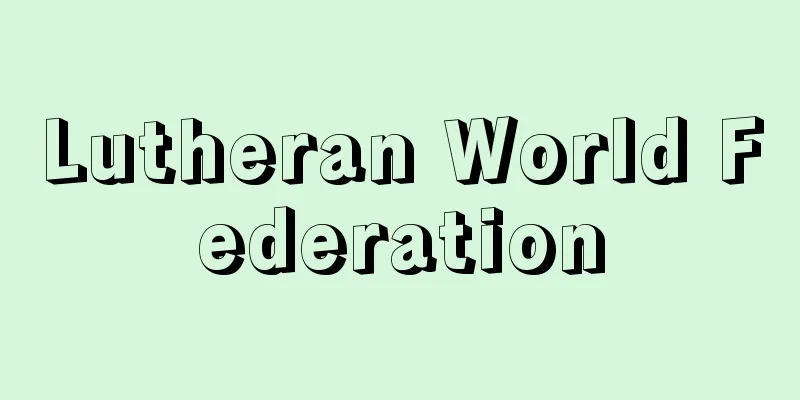Deng Xiaoping

|
Chinese politician. Born in Guang'an County, Sichuan Province (now Guang'an City). Known as the "chief architect of the Reform and Opening Up" movement, his ideas are known as the "Deng Xiaoping Theory." At the age of 17, he participated in the Work and Frugality Movement (a movement to study while working abroad) and studied in Paris (1920-1926), where he developed a close relationship with Zhou Enlai. In 1924, he joined the Communist Party. In 1931, he joined Mao Zedong and others who were active in Jiangxi and Hunan, and worked on the construction and expansion of the Chinese Soviet Provisional Government. Eventually, the party's central committee began to criticize Mao Zedong, and Deng Xiaoping was criticized as a Mao supporter and fell from grace. In 1934, he returned to the party as the secretary-general of the central committee during the Long March. During the War of Resistance against Japan, he served as deputy chief of the General Political Department of the Army and political commissar of the 129th Division of the Eighth Route Army, where he led the famous Hundred Regiments Battle. During the Chinese Civil War, the Liu Bocheng-Deng Xiaoping army developed into the second field army, and achieved success after successive defeats of the Kuomintang in North China, Central China, and Southwest China. Immediately after the founding of the People's Republic of China, the Southwestern Bureau of the Party Central Committee was established in December 1949, and he was appointed First Secretary of the Party. He was later appointed Vice Premier of the Executive Council in 1952. In 1954, he was appointed Vice Premier of the State Council, Vice Chairman of the National Defense Committee, and Secretary-General of the Party Central Committee. At the 8th Party Congress in 1956, he made a "Report on the Revision of the Party Constitution" and was elected General Secretary of the Party Central Secretariat. In the "Anti-Rightist Struggle" and "Great Leap Forward" that followed, he actively responded to Mao Zedong's calls, but he soon felt that the Great Leap Forward had gone too far and skillfully distanced himself from Mao. After the failure of the Great Leap Forward, President Liu Shaoqi led the reconstruction of the economy and diplomacy, but it was Deng Xiaoping who essentially supported him. His famous pragmatic "white cat, black cat theory" that "Whether a cat is white or black, the one that catches mice is the good cat" was spoken during this period. Eventually, Mao Zedong launched a counterattack, calling for the "overthrow of the powerful faction that was following the capitalist path," plunging the country into chaos. This was the "Cultural Revolution." It was Zhou Enlai who tried to fix the Cultural Revolution that had left many deep scars, but with cancer and very little time left to live, Deng Xiaoping was reinstated as his successor. Deng fought against the "Gang of Four" who still strongly opposed him, and worked to realize Zhou's "Four Modernizations" of industry, agriculture, science and technology, and national defense. With Zhou's death in January 1976, he was forced to step down for the third time, but after Mao's death in September of the same year, he was reinstated in July 1977. After that, he engaged in a power struggle with Hua Guofeng, who held the top posts in the party, military, and state at the time, and succeeded in "shifting to the reform and opening-up policy" at the Third Plenary Session of the 11th Central Committee (Third Plenum) in December 1978. High economic growth was achieved under the reform and opening-up policy thereafter. The characteristics of Deng Xiaoping's approach are summarized as follows: (1) economics first, (2) comparative advantage (acceptance of uneven development as seen in the theory of first getting rich), (3) reforms outside the socialist system first (putting agricultural reform and introduction of foreign-affiliated companies first, leaving reforms of state-owned enterprises, which are the most "socialist", on the back burner), (4) active introduction of a market economy, (5) gradualism, (6) emphasis on political stability, (7) a policy of international peace and cooperation for modernization construction, and a diplomacy that avoids confrontation and prioritizes the economy, known as "hiding one's strength while staying out of the spotlight". In the 1980s, he also advocated the need for political reform, but after the Tiananmen Square incident (June 4th incident) in 1989, he abandoned political reform. In 1992, when China was internationally isolated and the economy was stagnating, he gave his final rousing speech, the Southern Tour Speech, in which he called for the acceleration of reform and opening up, and the promotion of a market economy. This was successful, and even after Deng's death, the "Deng Xiaoping line" remained supported and steadily advanced on the path to a "prosperous and powerful China." [Amako Satoshi April 18, 2018] "Deng Xiaoping Speaks, Volumes 1 and 2, supervised by Takeuchi Minoru and Yoshida Tomio (1983, Fumaisha) " "Amako Satoshi, The Stirring of the Dragon: Mao Zedong vs. Deng Xiaoping (2004, Kodansha)" "Deng Xiaoping: The Father of Modern China, Volumes 1 and 2, written by Ezra F. Vogel, translated by Masuo Chisako and Sugimoto Takashi (2012, Nihon Keizai Shimbun Publishing)" [Reference items] | | | | | | | | |Source: Shogakukan Encyclopedia Nipponica About Encyclopedia Nipponica Information | Legend |
|
中国の政治家。四川(しせん)省広安(こうあん)県(現、広安市)生まれ。「改革開放の総設計師」といわれ、その考え方は「鄧小平理論」とよばれている。17歳で勤工倹学(海外で働きながら学ぶ運動)に参加しパリに留学(1920~1926)、そこで周恩来(しゅうおんらい)との親しい関係ができた。1924年に共産党に入党。1931年江西(こうせい)・湖南(こなん)で活動していた毛沢東(もうたくとう)らと合流し、中華ソビエト臨時政府の建設・拡大に従事する。やがて上海から移動してきたソ連留学生派の党中央による毛沢東批判が展開されるようになり、鄧小平も毛沢東派として批判され、失脚する。1934年に長征の途上で中央秘書長として復活した。抗日戦争中は、軍総政治部副主任、八路軍129師団政治委員として有名な百団大戦などを指揮。国共内戦期には、劉伯承(りゅうはくしょう)・鄧小平軍は第二野戦軍に発展し、華北、華中、西南へと次々と国民党撃破の戦果をあげた。 建国直後、1949年12月に党中央西南局が設立され、党第一書記に就任した。その後、1952年に政務院副総理に就任。1954年には国務院副総理、国防委員会副主席、さらには党中央秘書長など要職を兼務する。1956年の第8回党大会では「党規約改正報告」を行い、党中央書記処総書記に選出される。やがて始まった「反右派闘争」「大躍進」では毛沢東の呼びかけに積極的に応じたが、やがて大躍進の行きすぎを感じ、巧みに毛との距離を置くようになる。大躍進の挫折(ざせつ)後、国家主席の劉少奇(りゅうしょうき)が経済・外交の立て直しを指導したが、実質的にそれを支えたのが鄧小平であった。彼の有名な「白い猫でも黒い猫でもネズミをとる猫がよい猫だ」というプラグマティックな「白猫黒猫論」はこの時期の発言である。やがて毛沢東は反撃を開始し、「資本主義の道を歩む実権派打倒」を呼びかけ、全国は大混乱となった。これが「文化大革命(文革)」である。 数々の深い爪あとを残した文革の立て直しを図ったのは周恩来であったが、がんのため余命いくばくもない状態で、彼の後継者としてふたたび鄧小平が復活した。鄧はなお強い反発を示す「四人組」と戦いながら、周の提唱した工業・農業・科学技術・国防の「四つの近代化」実現に努めた。1976年1月周の逝去とともに三度目の失脚を余儀なくされたが、同年9月の毛沢東の死を経て1977年7月に再度復活を果たす。その後は、当時、党・軍・国家のトップのポストを占めていた華国鋒(かこくほう)との権力闘争を展開し、1978年12月の第11期中央委員第3回全体会議(三中全会)において、「改革開放路線への転換」に成功した。以後改革開放路線のもとで高度経済成長が実現する。 鄧小平路線の特徴は、(1)経済優先主義、(2)比較優位主義(先富論にみられる不均等発展の容認)、(3)社会主義体制外改革先行方式(もっとも「社会主義的」な国有企業の改革などを後回しにして農業改革、外資系企業の導入などを先行)、(4)市場経済の積極的導入、(5)漸進主義、(6)政治的安定の重視、(7)近代化建設のための国際平和・国際協調路線、「韜光養晦(とうこうようかい)」(光に当たらぬようにして力を醸成する)とよばれる対決回避・経済優先外交、などに集約される。1980年代には政治体制改革の必要性も説いていたが、1989年の天安門事件(六・四事件)後は、政治体制改革を放棄した。国際的に孤立し、経済停滞が続いた1992年、最後の檄(げき)ともいえる南巡講話を行い、改革開放の加速、市場経済の推進を訴えた。これが功を奏し、鄧の死後も「鄧小平路線」は支持され「富強中国」への道を着々と邁進(まいしん)した。 [天児 慧 2018年4月18日] 『竹内実・吉田富夫監訳『鄧小平は語る』上下(1983・風媒社)』▽『天児慧著『巨龍の胎動 毛沢東vs鄧小平』(2004・講談社)』▽『エズラ・F・ヴォーゲル著、益尾知佐子、杉本孝訳『現代中国の父 鄧小平』上下巻(2012・日本経済新聞出版社)』 [参照項目] | | | | | | | | |出典 小学館 日本大百科全書(ニッポニカ)日本大百科全書(ニッポニカ)について 情報 | 凡例 |
Recommend
Giuseppe Verdi
Italian composer. Born in Busseto on October 10th...
Meyer, AE
…However, the McLean family was close to Presiden...
Ichikawa Kodanji (4th generation)
[Born] Bunka 9 (1812) [Died] May 8, 1866 (Keio 2)....
Kishner, N.
...A reduction reaction that converts the carbony...
agrément (English spelling)
...The field of "foreign policy decision-mak...
Salynskii, AD (English spelling) SalynskiiAD
…In recent years, experimental work by young dire...
Coordinate bond
A form of chemical bond when classified superfici...
Shoyuuki
This is the diary of Fujiwara no Sanesuke (957-10...
Makarii
…Furthermore, the expansion of church property an...
Shimizu Tunnel - Shimizu Tunnel
A 9,702-meter-long single-track railway tunnel on...
Chinese law
The legal system in China. In French and German, l...
Pinnipedia - Pinnipedia
…the only placental mammals adapted to capture an...
Ciano (English spelling)
Born: March 18, 1903, Livorno Died: January 11, 19...
Risk of Damage - Risk of Damage
In a bilateral contract such as a sale, if one pa...
Aconitum hakusanense (English spelling) Aconitum hakusanense
…Poison [Nitta Aya]. . . *Some of the terminology...









